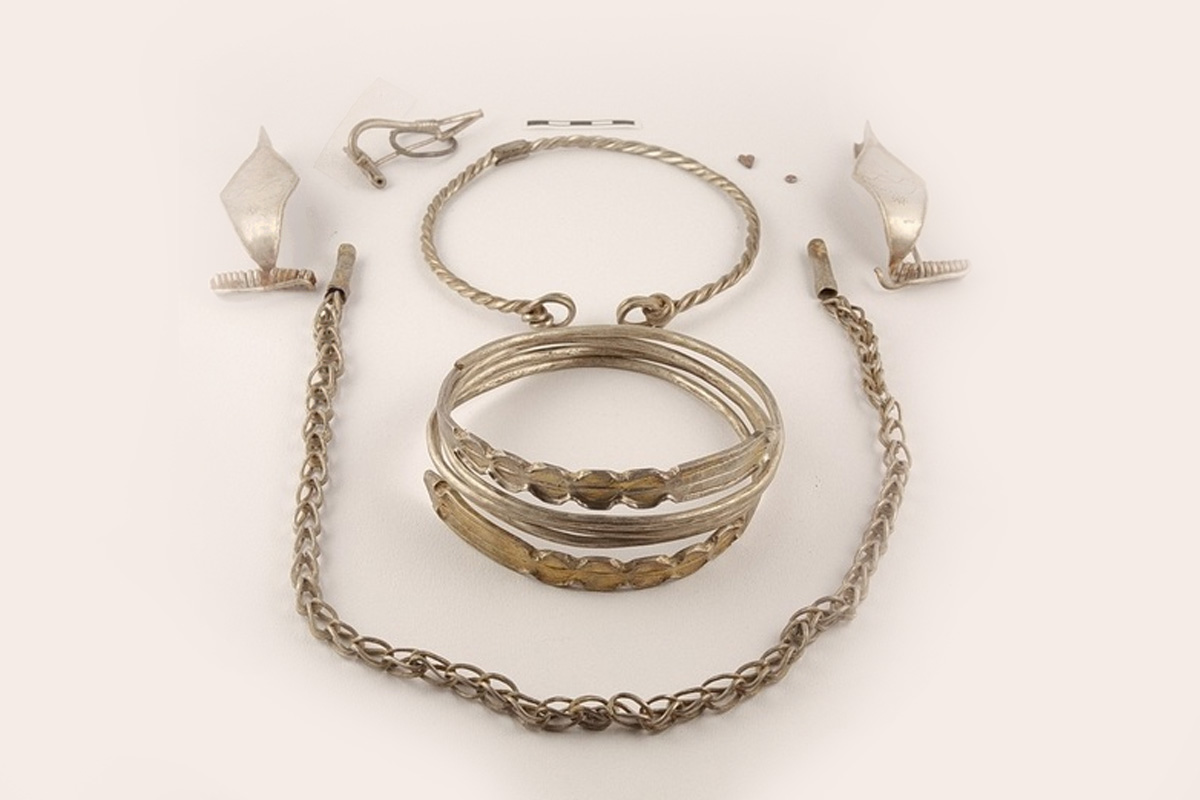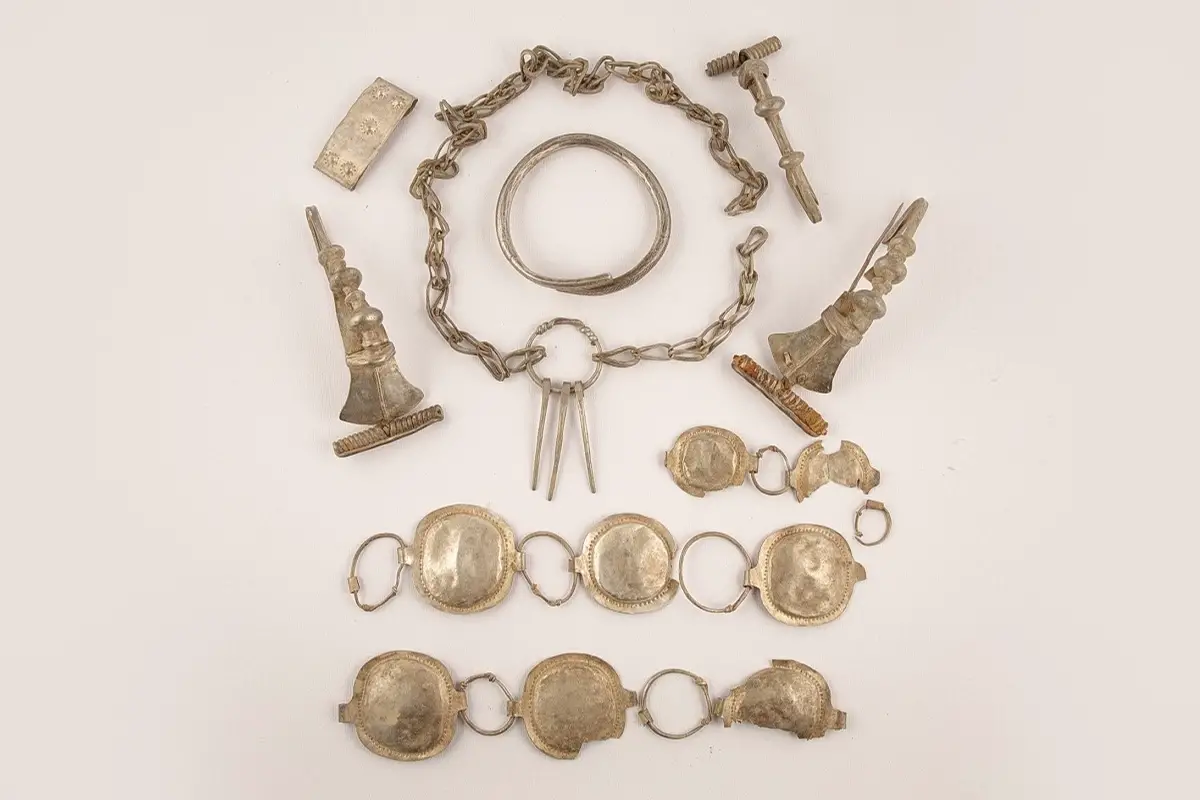A pair of detectorists conducting a survey near the town of Breaza have discovered a major treasure hoard associated with the Dacian people.
The Dacians were an Indo-European people who inhabited the region of Dacia, roughly corresponding to modern-day Romania and Moldova. They originated from the broader group of Thracian tribes, but gradually forged their own unique identity, culture, and social structure.
According to a press release from the Breaza City Hall in Mureș County, Romania, Dionisie-Aurel Moldovan and Sebastian-Adrian Zăhan, who discovered the hoard, reported their find in compliance with Poland’s legislation on the Protection of Monuments and the Care of Historical Monuments, which is now in the custody of the Mureș County Museum.
The hoard consists silver bracelets, brooches, a neck chain, and a belt made from oval plates with decorative solar motifs.

Archaeologists examining the objects have suggested that the owner must have held a significant status in Dacian society, as the pieces show exceptional craftsmanship and combined have a silver content of 550 grams.
The discovery of this hoard raises intriguing questions. Could it have been a ritual offering, dedicated to a now-forgotten deity? Or was it a hurriedly concealed treasure, hidden in times of turmoil with the hope of future retrieval?
The hoard also has significant archaeological value, providing the first physical evidence of Dacian presence in the Breaza area, where up until no traces of Dacian settlements were known in this region.
“The find opens exciting new perspectives on local history, with plans already underway for field research aimed at uncovering the possible existence of a settlement or even a Dacian fortress nearby,” said the Breaza Mures Municipality City Hall.
Header Image Credit : Breaza Mures Municipality City Hall
Sources : Breaza Mures Municipality City Hall





